Those Italian castagnole are fried dough balls with a tender texture inside and slightly crispy on the outside. They are sweet, aromatic, and the perfect treat to celebrate the Carnival season!
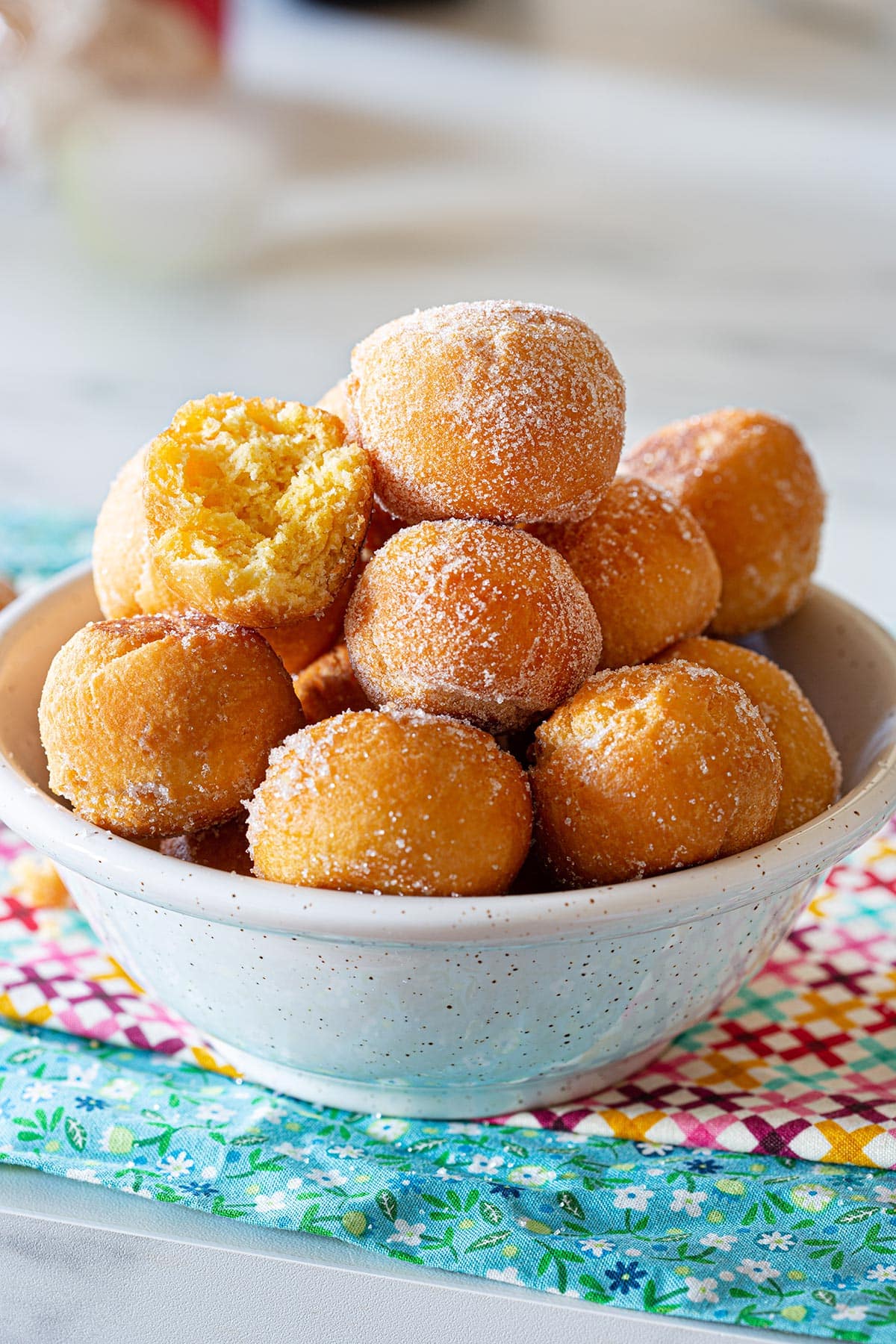
About
Castagnole is a traditional Italian dessert consisting of sweet fried dough balls with a soft texture on the inside and slightly crunchy on the outside. Those small treats are popular during the Italian Carnival season along with other fried sweet snacks like chiacchiere.
Their particular name comes from the Italian word castagna which means chestnut. Due to the small and alike shape, the word turned into castagnola which means small chestnut.
Carnevale (carnival) is such a fun time of the year here in Italy and Italians love to celebrate everything with food, so Carnival is no exception. You will see those delicious fried treats sold at every pastry shop and many nonne will also make them at home.
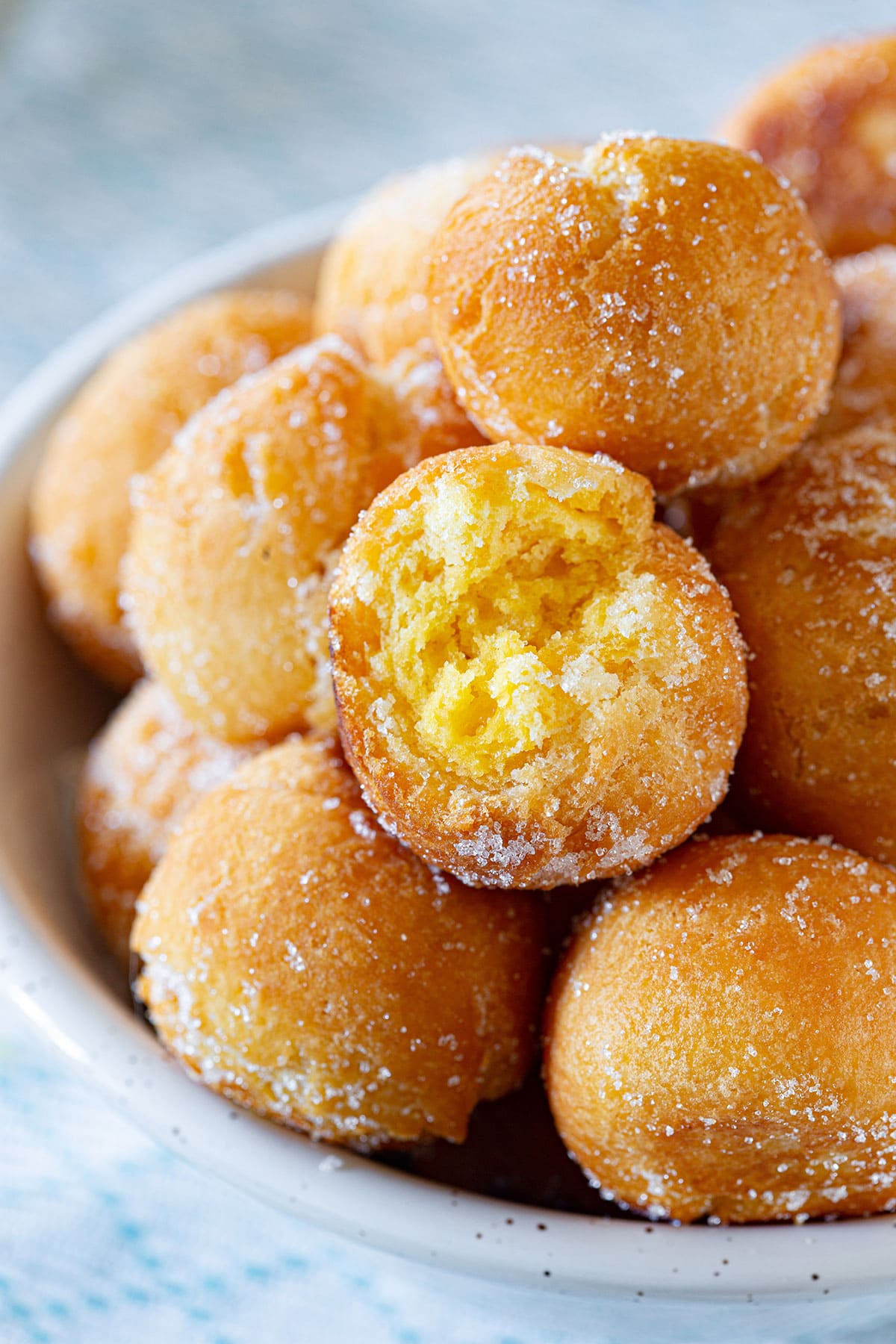
There are many ways of making this sweet treat in Italy, some of them include other ingredients such as ricotta, pumpkin, or even Nutella. Our recipe features the way they’re made in Rome.
Since the dough is not made with yeast but with baking powder, the fried dough balls have a more compact texture but are still soft and a bit fluffy.
Ingredients
- Flour: Use all-purpose flour for a fluffy texture.
- Eggs: I used medium eggs, each one was about 55g.
- Butter: Use softened butter so it will be easier to combine.
- Sugar: Use granulated sugar, you will use some for the dough and more for coating.
- Liquor: The traditional recipe is made with Mistrà, an Italian liquor made with anise which gives a particular aromatic flavor to castagnole, feel free to leave it out or use a pinch of ground anise seeds instead.
- Vanilla: Make sure you use vanilla extract or vanilla paste, as vanilla essence is just an artificial flavor.
- Lemon: You will need the juice and zest of one large lemon.
- Baking powder: To make the dough puff, use baking powder as yeast won’t work in this recipe.
- Oil: Use your favorite type of oil for frying, I used mild olive oil.
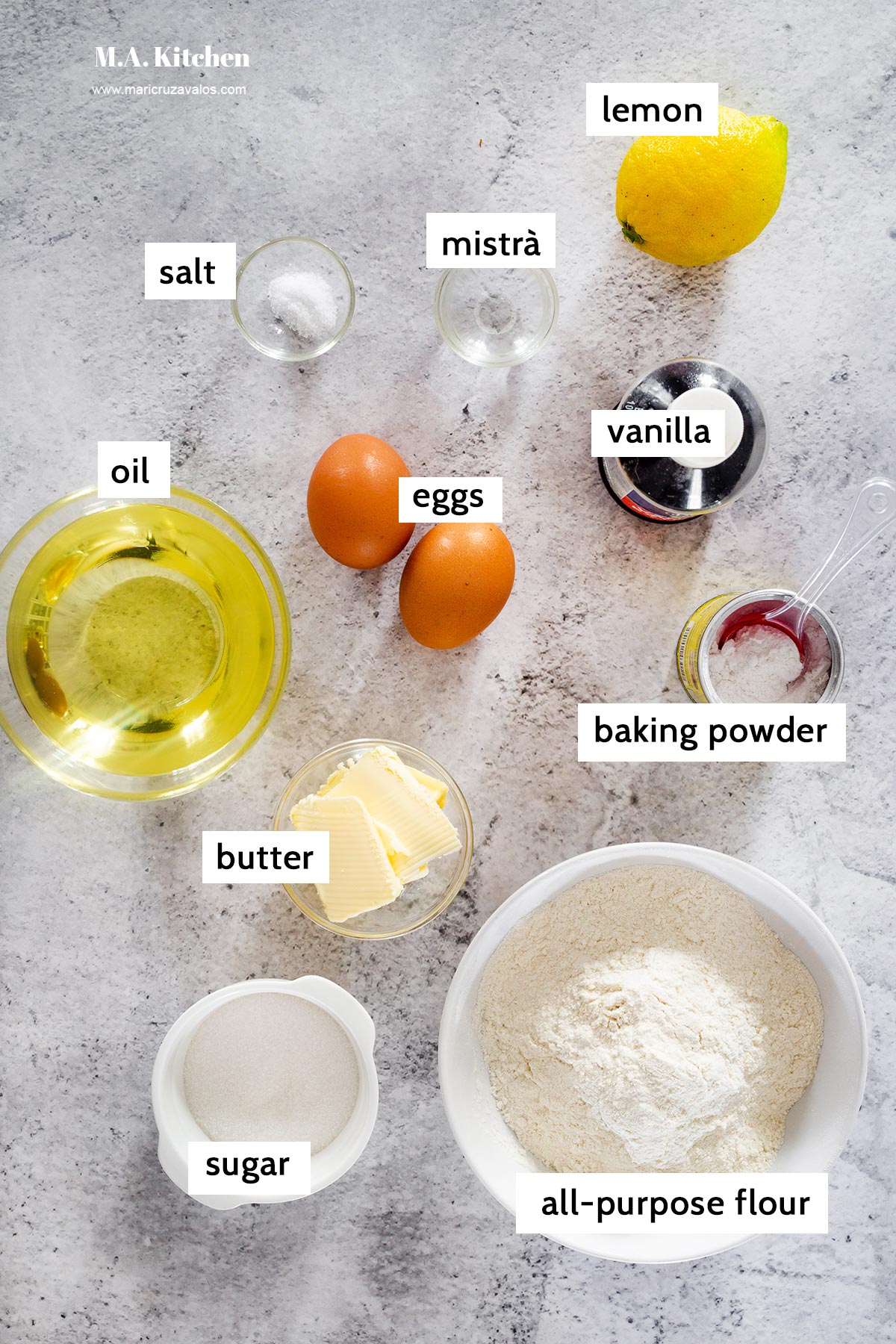
How To Make Castagnole
In a large mixing bowl, add flour, sugar, and baking powder. Mix well to combine.
Make a well in the middle and add eggs, salt, butter, lemon zest, lemon juice, Mistrà liquor, and vanilla extract.
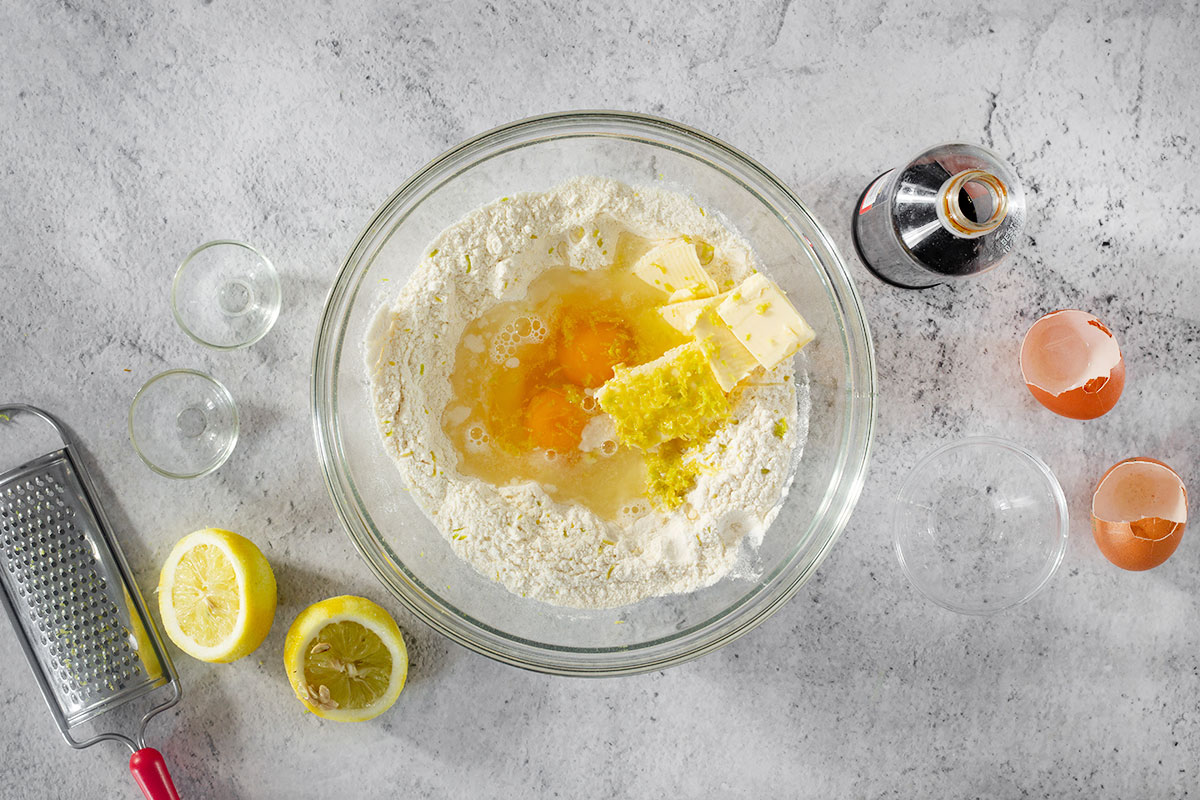
Combine the ingredients until everything is slightly combined. Use your hands or your stand mixer whisk attachment.

Knead for about 5-7 minutes or until you’ll have a soft dough that doesn’t stick to your hands. You can also transfer the dough to a floured surface to do this step.
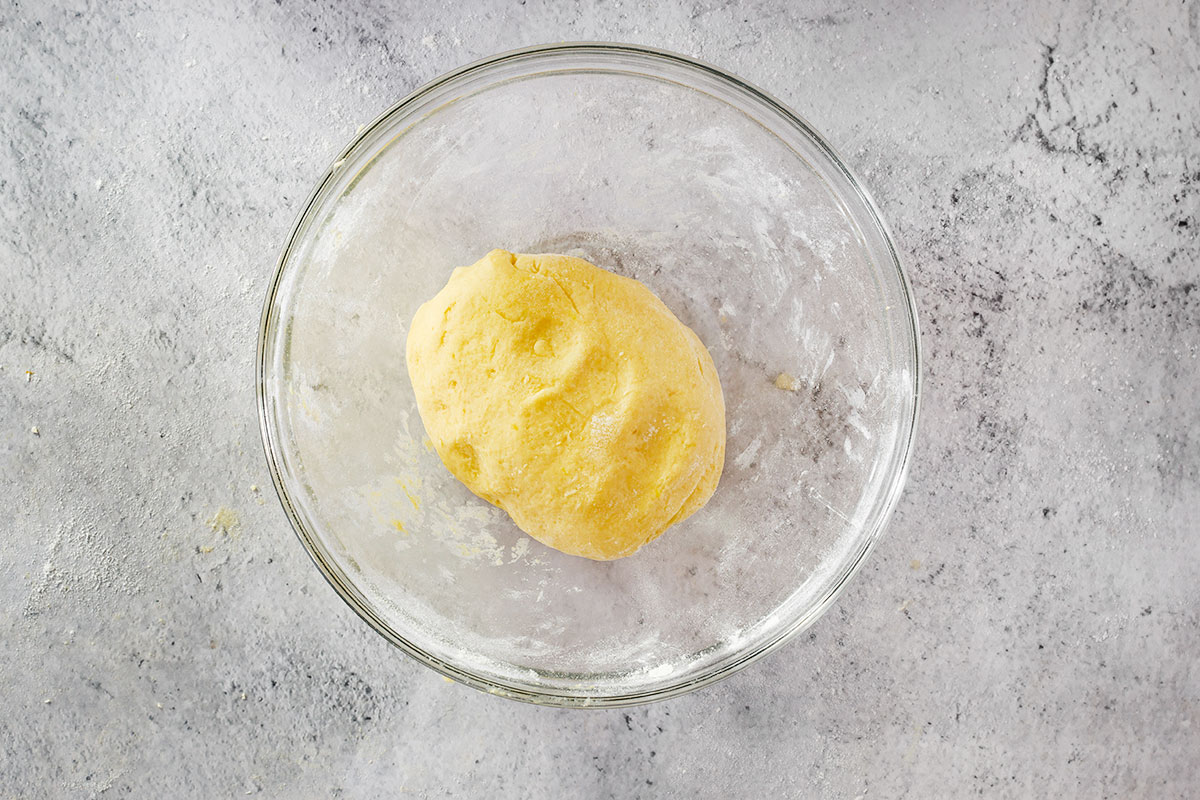
Cover the dough with a kitchen towel or cling film and leave it to rest for 20 minutes.
After that, divide the dough into two parts and make two long ropes about 1.5 inches (4 cm) thick. Cut the ropes into 10 chunks each.
Shape each chunk into balls and place all on a lightly floured plate.
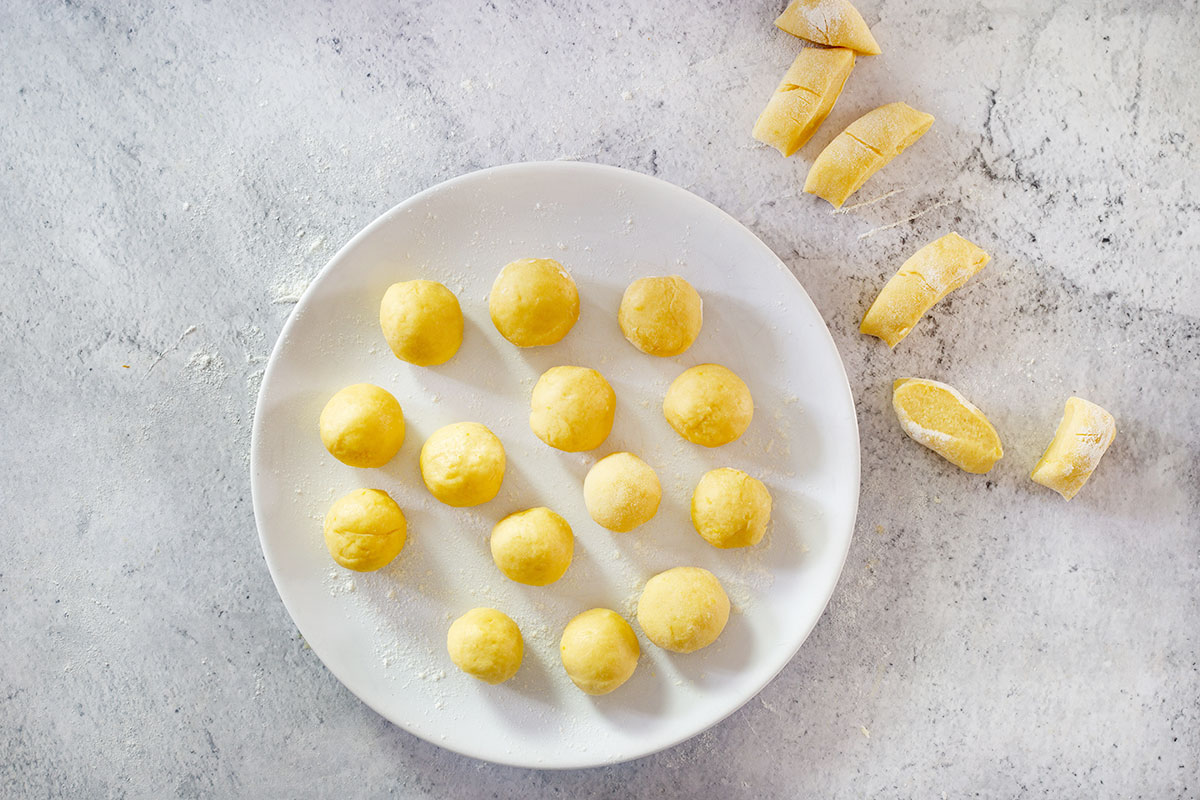
Heat about 2 inches of oil in a frying pan over medium-low heat. Prepare also a plate lined with kitchen paper towels and a plate with about 1 cup of sugar.
Working in small batches fry the castagnole until puffy, golden, and crispy on all sides.
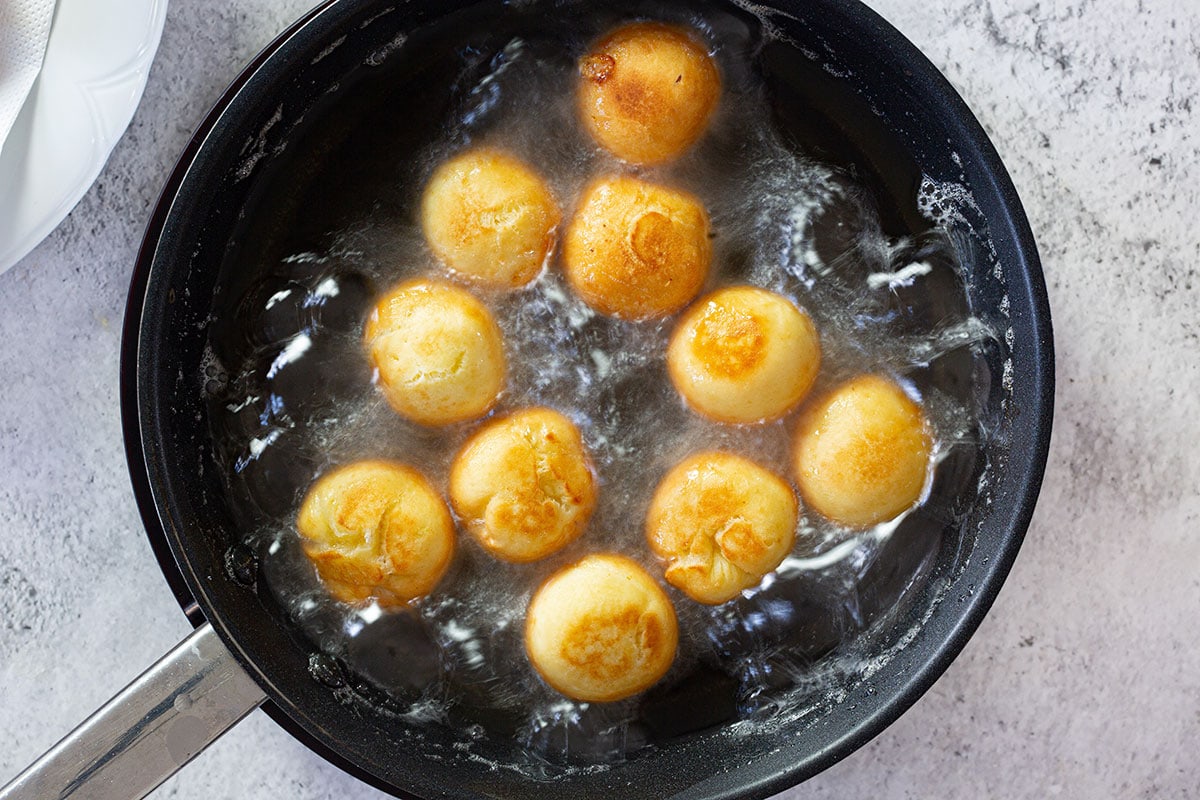
Use a slotted spoon to remove the fried balls from the oil and roll them in sugar until nicely coated.
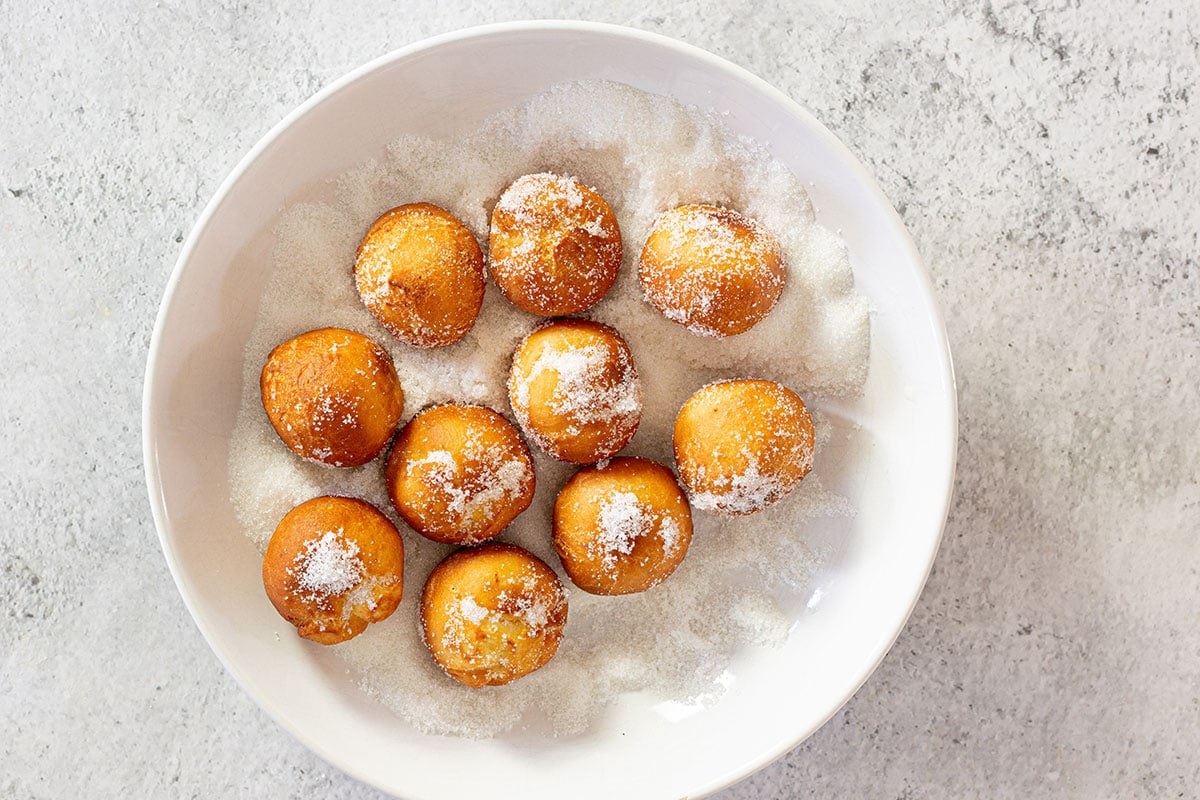
How to bake
If you prefer to bake the castagnole, this is what you should do:
Recipe Notes
- When deep frying the dough balls keep the oil temperature around 350°F, higher than that the dough will burn quickly and remain raw on the inside, and lower than that the dough will absorb too much oil.
- Always work in batches, frying a few pieces at a time, because too many together can lower the temperature of the oil.
- Instead of rolling in granulated sugar, you can dust these treats with confectioner’s sugar too.
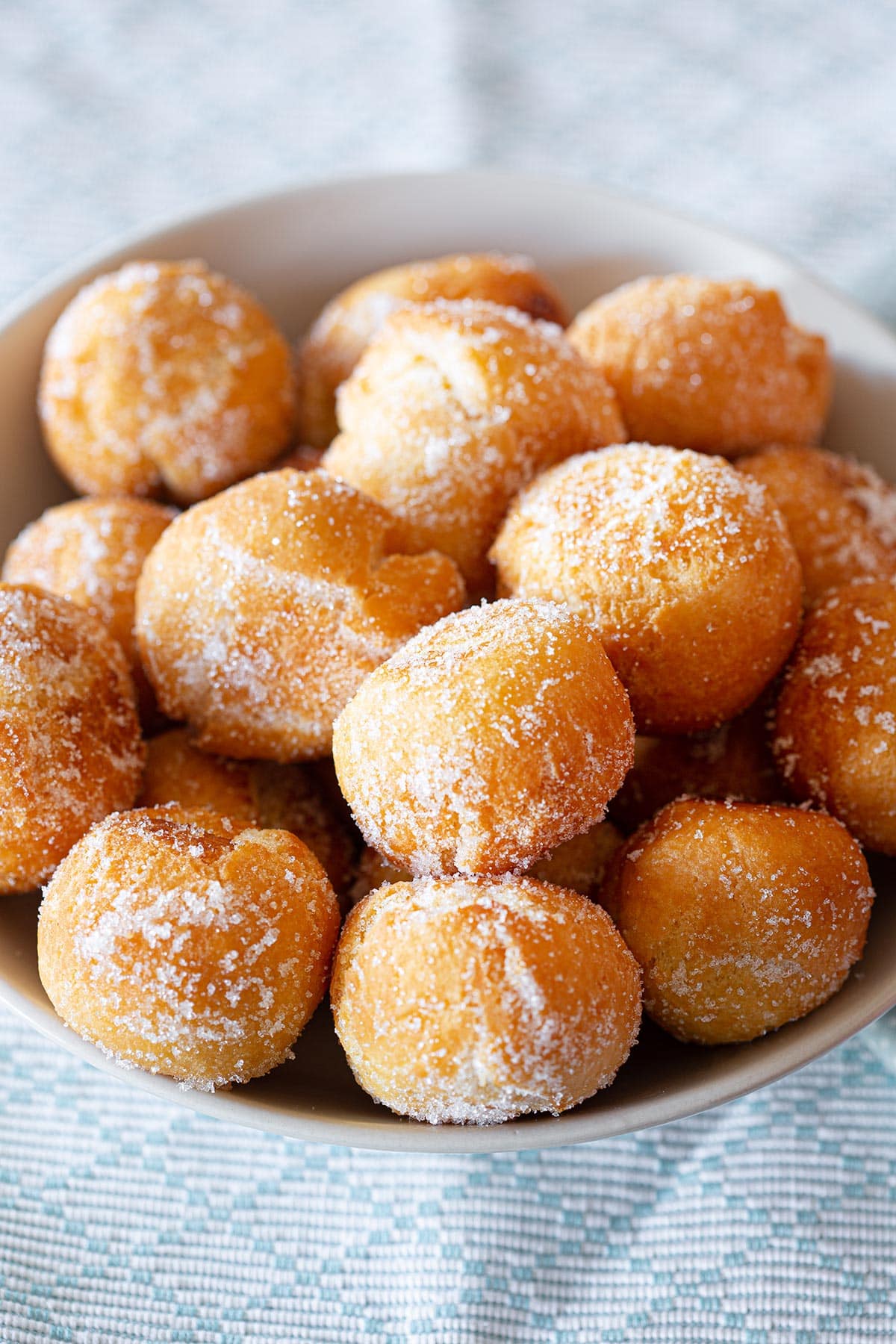
How To Serve
Castagnole are usually served as a snack and not as dessert, often paired with coffee or tea as an afternoon treat.
Is very common to find them in bakeries sold by weight or size of the tray. If you want to buy them as a gift, don’t buy too many, they are a little high on calories and Italians usually have just a couple of them and that’s it.
How To Store
When it comes to storing these sweet fried dough treats take in mind that they’re definitely better eating within the same day they’re made.
That being said, you can store leftovers for up to 3 days on your kitchen countertop and inside an airtight container. You can also pop the treats in the oven and warm them up for a few minutes before eating.
Or you can freeze the dough for up to 3 months. When ready to make the fried dough balls, just thaw the dough overnight and proceed as instructed in the recipe.
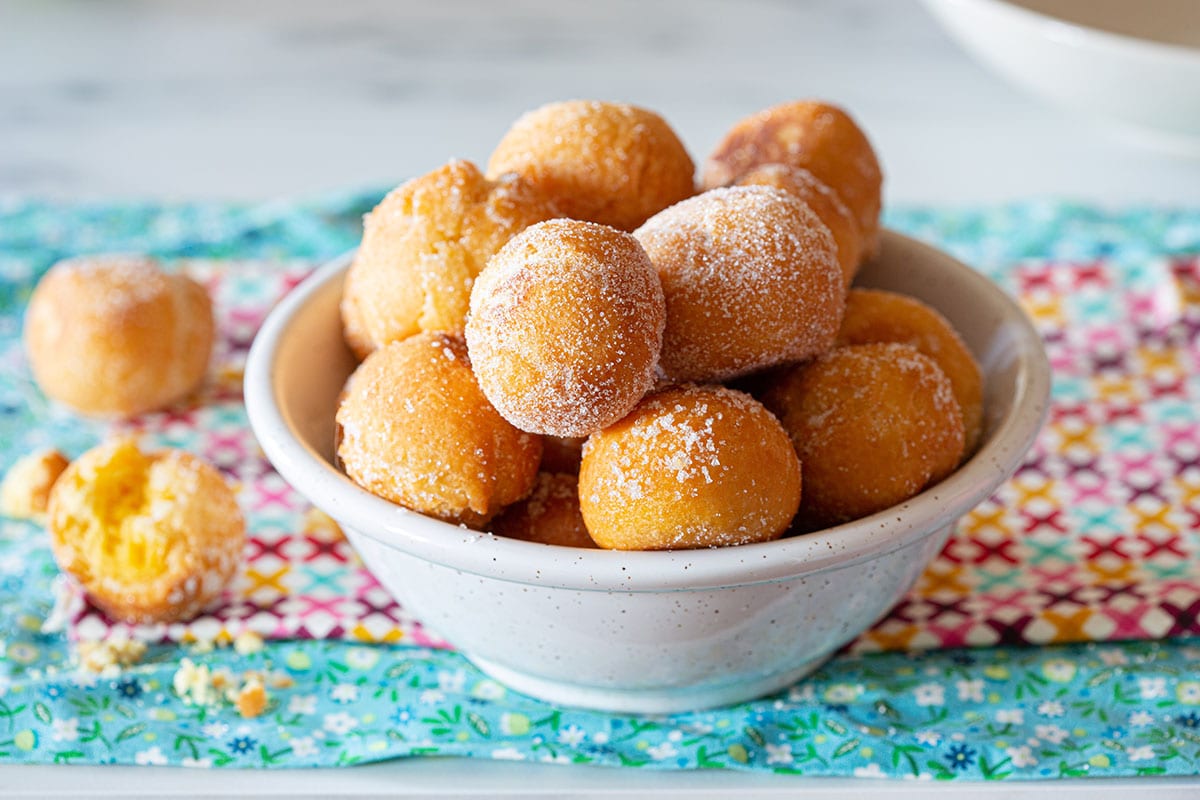
More Italian Sweet Recipes
- Ciambellone. An Italian breakfast cake to serve with a cappuccino, tea, or your favorite hot beverage.
- Italian pastry cream. This is a basic and traditional Italian recipe that every baker should know about!
- Amaretti. Those soft Italian cookies have a wonderful almond scent and are naturally gluten-free.
Watch How To Make It

Castagnole
Ingredients
- 2 cups all-purpose flour
- 3 Tbsp butter (softened)
- ¼ cup sugar
- 1 Tbsp Mistrà liqueur (optional)
- 1 tsp vanilla extract
- 1 tsp lemon juice
- 1 lemon, zest
- 2 tsp baking powder
- 2 medium eggs
- pinch of salt
- oil for frying (olive oil, sunflower, etc.)
- sugar (for coating)
Instructions
- Combine flour, baking powder, and sugar in a large mixing bowl.
- Add eggs, lemon zest, lemon juice, Mistrà liquor, vanilla extract, and salt.
- Mix with a fork to combine. Add butter and using your fingers start integrating the ingredients.
- Knead for about 5-7 minutes, if you find it easier, transfer the dough to a floured surface. You need to achieve a smooth dough that doesn’t stick to your hands.
- Cover the dough with a kitchen towel or cling film and leave it to rest for 20 minutes.
- Divide the dough into two parts and make two long ropes about 1 ½ " (4 cm) thick. Cut the ropes into 10 chunks each.
- Shape each chunk into balls and place them on a floured plate.
- Heat about 2″ (5 cm) of oil on a frying pan over medium heat. Working in small batches fry the castagnole until golden, crispy, and cooked through (see notes).
- Place castagnole on a paper-lined plate to remove excess oil, then roll them in sugar until nicely coated.
- Serve warm or allow to cool down completely and store in an airtight container.
Notes
- You can store castagnole in an airtight container for up to 4 days at room temperature.
- Always work in batches, frying a few pieces at a time, because too many together can lower the temperature of the oil.
- If you don’t have or want to use Mistrà liqueur you replace it with orange liqueur or even leave it out it if want.
Nutrition Information
Loved this traditional Italian recipe? Please, don’t forget to rate it and leave a comment below. Also, remember that you can share this recipe and follow this blog on:
- This recipe was originally published on this blog on January 19, 2021. It has been updated and republished on January 1, 2023.
- **This recipe has been shared on CookBlogShare Week 3


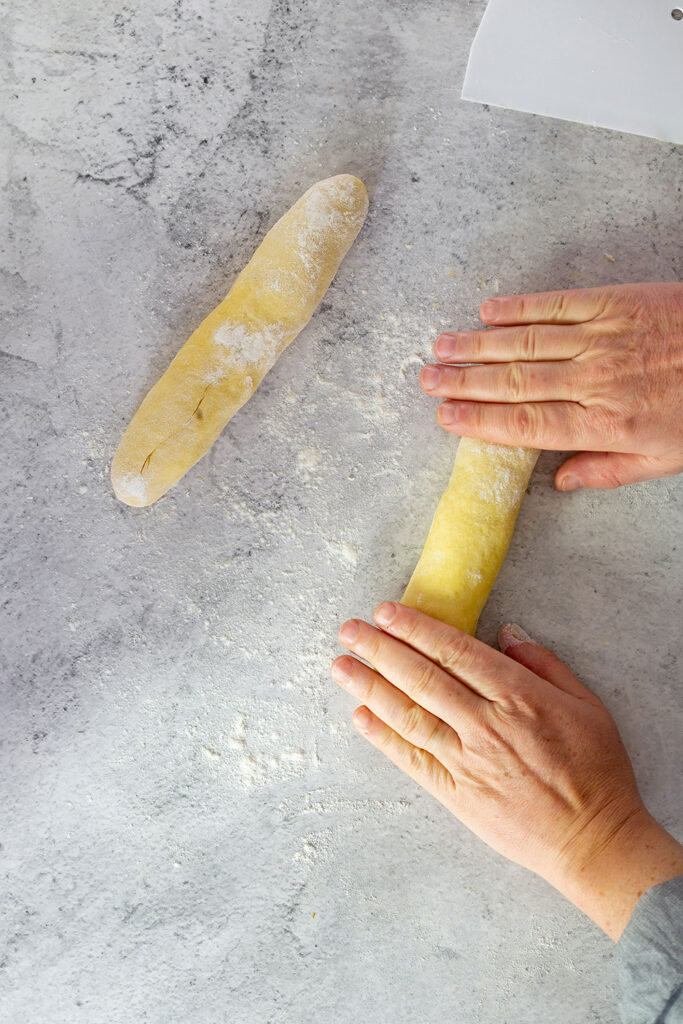
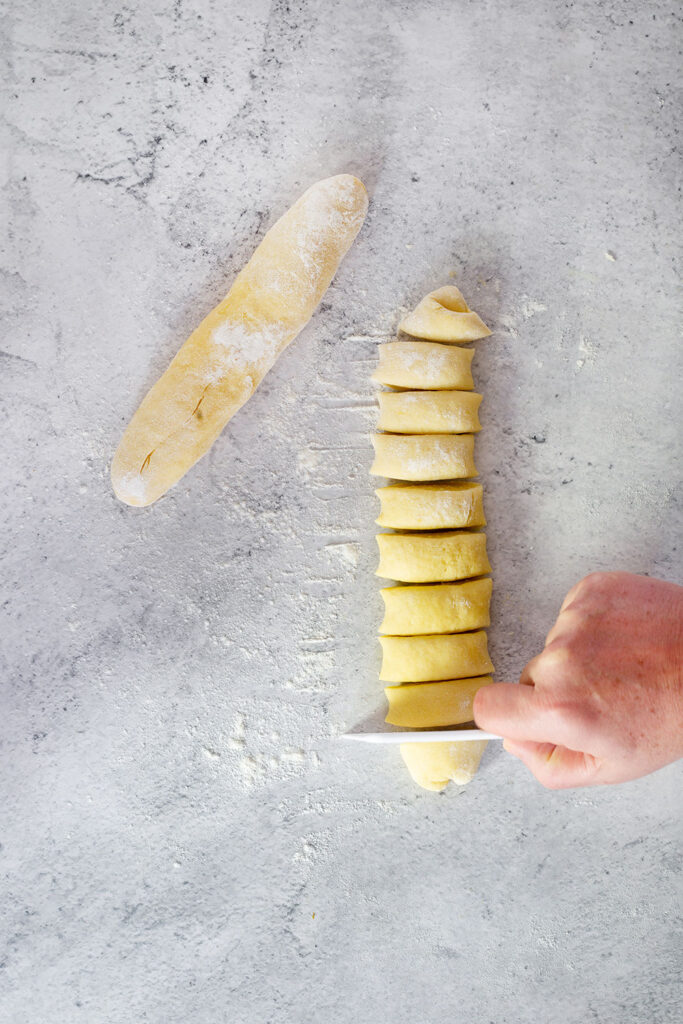

This is something I would love to try. I want to reach out and grab one. They are stunning!
This look absolutely incredible! So light and fluffy!
Oh! These look so delicious. I adore lemon flavoured anything. These are like mini lemon doughnuts and I feel I need to have some in my life.
These cute little castagnole looks like donut holes. I have to give it a try as they look so delicious!
Hi Julia, the texture is a bit less puffy but they’re delicious for sure!